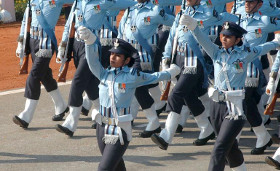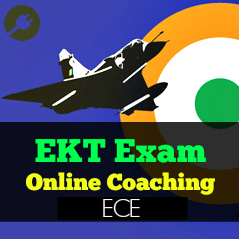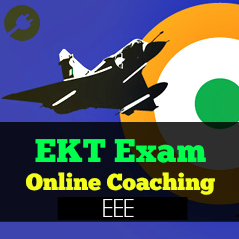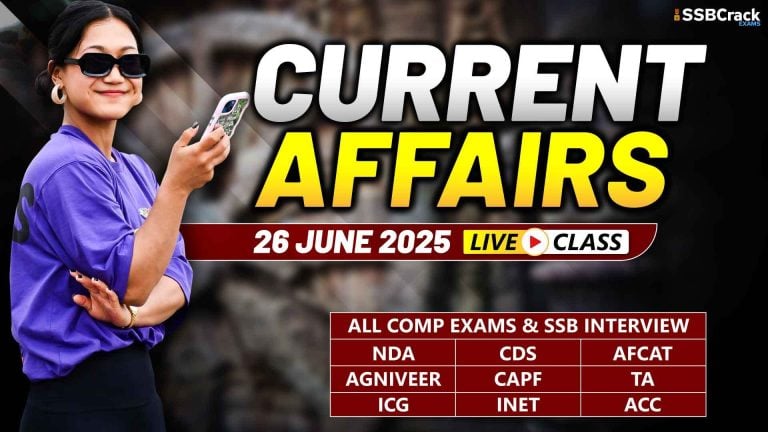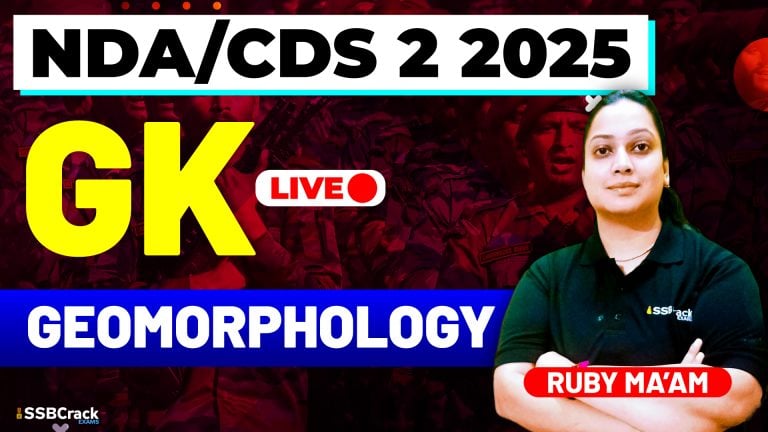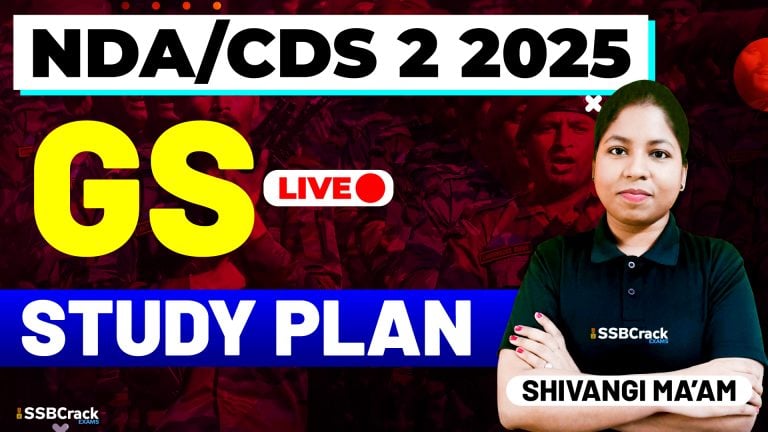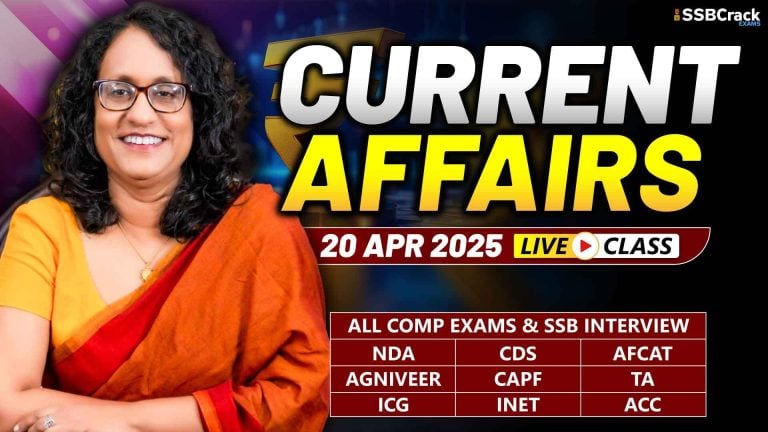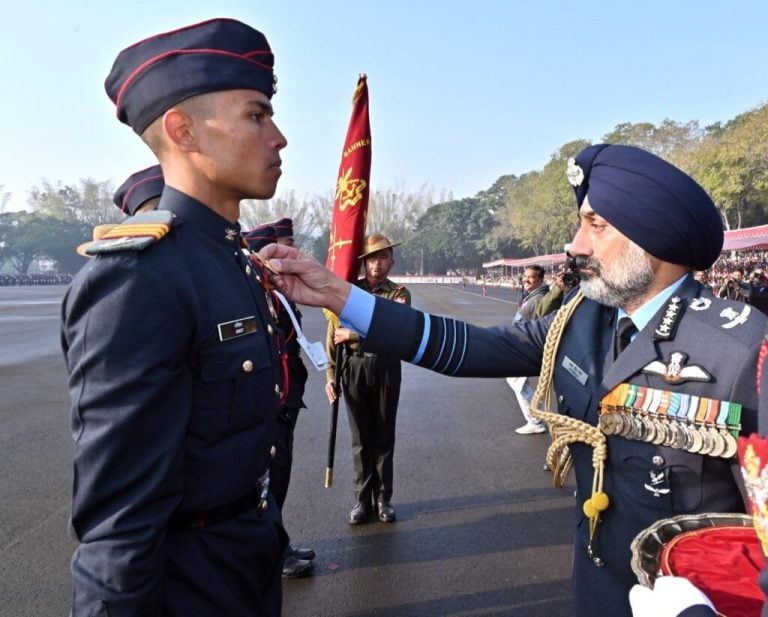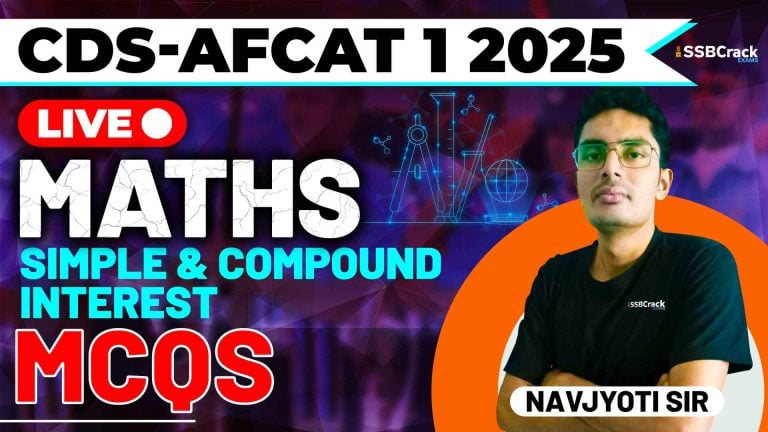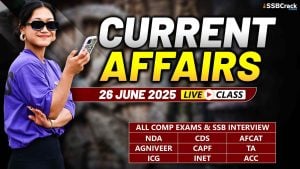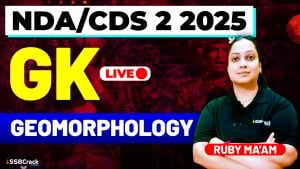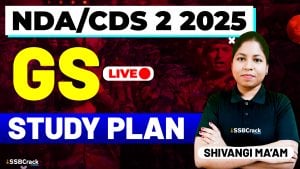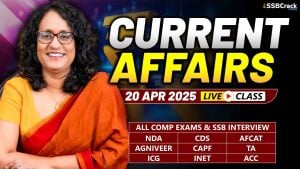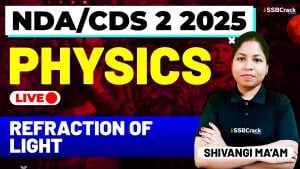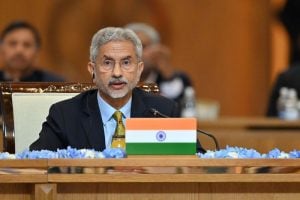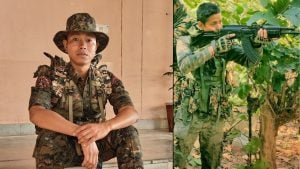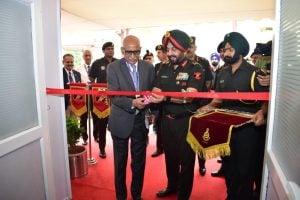AFCAT 1 and 2 2017 will be conducted in February and September 2017 respectively along with Engineering Knowledge Test EKT for technical entry. Engineering Knowledge Test is a common test aimed at testing the Basic Engineering knowledge of the candidates applied for Aeronautical Engineering Courses. Engineering Knowledge Test is pitched at pre-final to final year engineering level. The test consists of two parts viz General Engineering and Specialist subjects for the two streams of Technical Branches i.e Aeronautical Engineering (Electronics) and Aeronautical Engineering (Mechanical). The specialised papers are in Mechanical Engineering, Aeronautical engineering, Electronics and Communication engineering, Electrical and Instrumentation engineering and Computer Engineering.
EKT Engineering Knowledge Test 1 2017 syllabus Electrical And Electronics
EKT EE/EEE Exam Online Coaching
Fundamental Engineering
Engineering Mathematics: Matrix Algebra, Eigen values and Eigen vectors, Theorems of integral calculus, Partial derivatives, Maxima and minima, Multiple integrals, Stokes, Gauss and Green’s theorems. First order differential equation (linear and nonlinear), Cauchy’s and Euler’s equations, Complex variables, Taylor’s and Laurent’ series, Sampling theorems, Mean, Median, Mode and Standard deviation, Random variables, Discrete and Continuous distributions, Fourier transform, Laplace transform, Z-transform.
Engineering Physics: Units for measurement, Description of Motion in One, Two and Three dimensions, Laws of Motion, Work, Energy and Power, Rotational Motion, Gravitation, Heat and Thermodynamics, Electrostatics, Electric Current, Magnetic Effect of Currents, Magnetism, Electromagnetic Induction and Alternating Currents and Electromagnetic Waves, Ray Optics and Optical Instruments.
Engineering Drawing: Projection of straight line, planes and solids, Intersection of surfaces, Isometric Projection, Sectional Views of solids, Full section, Introduction to Computer-Aided Drafting.
Specialisation Branch Topics
Analog and Digital Electronics: Characteristics of diodes, BJT, FET, JFET and MOSFET, Amplifiers – biasing, equivalent circuit and frequency response, Oscillators and feedback amplifiers, Operational amplifiers – characteristics and applications, Simple active filters, VCOs and timers, Combinational and sequential logic circuits, Multiplexer, Schmitt trigger, Multi-vibrators, Sample and hold circuits, A/D and D/A converters, 8-bit microprocessor basics, architecture, programming and interfacing.
Electrical Engineering: Single phase transformer – equivalent circuit, phasor diagram, tests, regulation and efficiency, Three phase transformers – connections, parallel operation, Auto-transformer; Energy conversion principles, DC machines – types, windings, generator characteristics, armature reaction and commutation, starting and speed control of motors, Single phase and Three phase induction motors – principles, types, performance characteristics, starting and speed control, Starting motors, Servo and stepper motors, Synchronous machines Generators – performance, regulation and parallel operation.
Electronic Devices: Energy bands in Silicon, Intrinsic and extrinsic Silicon, Carrier transport in Silicon – diffusion current, drift current, mobility, and resistivity. Generation and recombination of carriers, p-n junction diode, Zener diode, tunnel diode, BJT, JFET, MOS capacitor, MOSFET, LED, PIN and avalanche photo diode, Basics of LASER. Device technology – integrated circuits fabrication process, oxidation, diffusion, ion implantation, photolithography, n-tub, p-tub and twin-tub CMOS process.
Control Engineering: Application of open loop and closed loop systems, Principles of feedback, Determination of transfer function by block diagram reduction method, Time domain analysis of first and second order systems, transient and steady-state errors, damping and oscillations, Routh and Nyquist techniques, Bode plots,Root loci, Lag, lead and lead-lag compensation, State space model, State transition matrix, Controllability and observability.
Telecommunication Systems: Random signals and noise – probability, random variables, probability density function, autocorrelation, power spectral density. Analog communication – amplitude and angle modulation and demodulation systems, spectral analysis of these operations, superheterodyne receivers, elements of hardware, realisations of analog communication systems, signal-to-noise ratio (SNR) calculations for AM and FM. Fundamentals of information theory and channel capacity theorem. Digital communication systems – Pulse Code Modulation (PCM), Differential Pulse Code Modulation (DPCM), Digital modulation schemes: amplitude, phase and frequency shift keying schemes (ASK, PSK, FSK), Matched filter receivers, Bandwidth consideration and probability of error calculations for these schemes. Basics of TDMA, FDMA and CDMA. Fundamentals of mobile communication. Fundamentals of optical fibre communication.
Microwave Engineering: Wave guides, Waveguide components, Klystrons, Travelling Wave Tubes, Magnetron, Microwave measurements, Introduction to microstrip lines, Microwave network analysis, Microwave semiconductor devices, Monolithic microwave integrated circuits.
Antenna and Wave Propagation: Antenna parameters, Radiation from a current element in free space, Reciprocity theorem, Resonant and non-resonant antenna, Effective length and aperture, gain, beamwidth, directivity, radiation resistance, efficiency, polarization, impedance and directional characteristics of antenna, antenna temperature. Phased array antenna, Mechanism of radio wave propagation, Reflection, refraction, interference and diffraction of radio waves. Theory of ground wave, space wave, sky wave and troposcatter propagation.
Allied Engineering Topics:
Instrumentation: Accuracy, precision and repeatability, Electronic instruments for measuring basic parameters, Theory of Oscilloscopes, Signal generators, Signal analysers, Characteristics and construction of transducers.
Computer Networks: ISO/OSI stack, LAN technologies (Ethernet, Token ring), Flow and error control techniques, Congestion control, TCP/UDP and sockets, IPv4, Application layer protocols (icmp, dns, smtp, pop, ftp, http); Basic concepts of hubs, switches, gateways, and routers.
Network Theory Design: Thevenin’s, Norton’s, Reciprocity, Superposition, Compensation, Miller’s, Tellegen’s and Maximum power transfer theorems. Impulse, step, ramp and sinusoidal response analysis of first order and second order circuits. Two port parameters and their interrelations, Application of Laplace transform and Fourier series in the context of network analysis, Network synthesis.
Switching Theory: Traffic definitions, Introduction to switching networks, classification of switching systems. Grade of Service, Basics of Circuit switching and packet switching.
Information Technology: Fundamentals of operating system, terminologies, Object Oriented Programming, Basics of computer graphics. RDBMS
Radar Theory: Radar range equation, Frequencies of operation, fundamentals of Moving Target Indicator (MTI), Pulse Doppler Radar, Tracking radar.
EKT 2017 EE/ECE sample questions
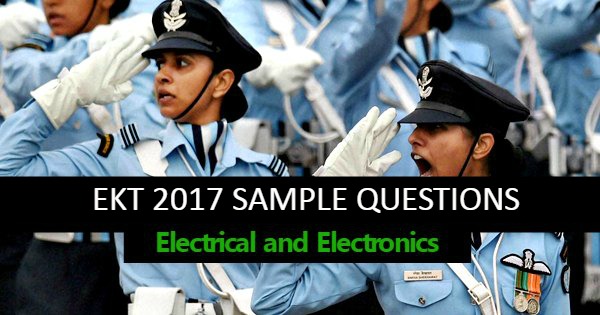
EKT question paper of Electrical and Electronics stream consisted of a total of 50 questions, with each question carrying 3 marks and 1 negative mark for each wrong attempt.
Ql. If x=a(cos t + t sin t), y=a(sin t – t cos t). The value of dy/dx is
(a) cos t
(b) sin t
(c) tan t
(d) sec2 t
Q2. The area of three faces of a cuboid are in the ratio 2:3:4 and its volume is 9000 cm3. The length of the shortest edge is
(a) 15 cm
(b) 30 cm
(c) 20 cm
(d) 60 cm
Q3. ∫▒dx/xlogx is equal to
(a) log x+x+c
(b) log(logx)+c
(c) xlogx+c
(d) (log x )/x+C
Q4. Tickets numbered 1 to 20 are mixed up and then a ticket is drawn at random. What is the probability that the ticket drawn has a number which is a multiple of 3 or 5?
(a) 8/2
(b) 9/20
(c) 8/15
(d) 2/20
Q5. The projection of a vector on another vector is
(a) Scalar
(b) Vector
(c) neither vector nor scalar
(d) either scalar or vector
Q6. In MKS system, we measure
(a) mass in kilogram
(b) distance in meter
(c) time in second
(d) all of these
Q7. When the separation between two charges is made four times, the force between them
(a) increases four times
(b) decreases four times
(c) increases sixteen times
(d) decreases sixteen times
Q8. When a conductor cuts magnetic flux, an emf is induced in the conductor. This is known as
(a) Joule’s law
(b) Faraday’s law
(c) Coulomb’s law
(d) Ampere’s law
09. X-rays are used for the study of crystal structure because
(a) X-rays are completely absorbed by the crystal
(b) the wavelength of X-ray is of the same order of magnitude in the inter-atomic spacing in crystals
(c) the wavelength of X-rays is very small in comparison with the inter-atomic spacing in crystals
(d) the crystals are completely transparent to X-rays
Q10. A radioactive isotope has a half-life of 10 days. If today there are 125 g of it left, what was its original weight 40 days earlier
(a) 600 g
(b) 1000 g
(c) 1250 g
(d) 2000 g
Q11. Angles project true size only when the plane containing the angle and plane of projection are
(a) Aligned
(b) Adjacent
(c) Perpendicular
(d) Parallel
Q12. Tesla is a measure of
(a) magnetic flux density
(b) electric flux density
(c) magnetic potential
(d) electric potential
Q13. Admittance is reciprocal of
(a) susceptance
(b) impedance
(c) reactance
(d) conductance
Q14_____is an active filter
(a) RC filter
(b) notch filter
(c) Butterworth filter
(d) band pass filter
Q15. For transmission line load matching over a range of frequencies, it is best to use a
(a) Balun
(b) broadband directional coupler
(c) double stub
(d) single stub
Q16 Emitter follower is used for
(a) reducing the gain
(b) increasing the distortion
(c) impedance matching
(d) none of these
Q17. Binary equivalent of (45)10 is
(a) (11101)2
(b) (11110)2
(c) (101101)2
(d) (110101)2
Q18. In Computer memory size K indicates Kilo, which is equal to
(a) 1000
(b) 1024
(c) 100
(d) 10000
Q19. An astable multivibrator has
(a) no stable state
(b) one stable state
(c) three stable states
(d) two stable states
Q20. An ideal Op Amp has .
(a) infinite input and output impedance
(b) very low input and output impedance
(c) low input impedance and very high output impedance
(d) infinite input impedance and zero output impedance
Q21. An instruction used to set the carry flag in a computer can be classified as a
(a) data transfer instruction
(b) arithmetic instruction
(c) logical instruction
(d) program control instruction
Q22. An FET is a
(a) bipolar semiconductor device
(b) unipolar semiconductor device
(c) non semiconductor device
(d) both (a) and (c)
Q23. For Gunn diodes, semiconductor material preferred is
(a) Silicon
(b) Germanium
(c) Gallium Arsenide
(d) all of these
Q24. In a JFET drain current is maximum when VGS is
(a) zero
(b) negative
(c) positive
(d) equal to Vp
Q25. The output of Laser is
(a) Infrared
(b) polarised
(c) narrow beam
(d) coherent
Q26. As compared to a closed loop system an open loop system is
(a) more stable as well as more accurate
(b) less stable as well as less accurate
(c) more stable but less accurate
(d) less stable but more accurate
Q27. Transfer function of a system is used to calculate
(a) the steady state gain
(b) the time constant
(c) the order of the system
(d) the output for a given input
Q28. In a closed loop control system
(a) control action depends upon the output and also on the input command
(b) output signal is fed back to be compared with the reference signal
(c) the accuracy is better than in the open loop system
(d) all of the above
Q29. The difference of the reference input and the actual output signal is called
(a) error signal
(b) controlling signal
(c) actuating signal
(d) transfer function
Q30. If the transfer function of a system is 1/(Ts+1), the steady state error to unit step input is
(a) T
(b) zero
(c) infinite
(d) none of these
Q31. In a PID controller, the values of proportional, integral and derivative are dependent on
(a) future, past and present errors respectively
(b) present, past and future errors respectively
(c) past, present and future errors respectively
(d) present, future and past errors respectively
Q32. The inverse Laplace transform of 2/(s+1) is
(a) 2(t+1)
(b) 2e-t
(c) 2et
(d) e-2t
Q33. The signal is extended from 96KHz to 10OKHz, so the minimum sampling frequency required is
(a) 8 KHz
(b) 200 KHz
(c) 4 KHz
(d) 100 KHz
Q34. A differentiation circuit has a
(a) very high time constant
(b) very low time constant
(c) infinite time constant
(d) zero time constant
Q35. Ideally Voltage Standing Wave Ratio (VSWR) should be
(a) as large as possible
(b) as small as possible
(c) as close to unity as possible
(d) infinity
Q36. Following is/are a property/properties of quantization
(a) it is an nonlinear process
(b) it is an irreversible process
(c) it maps a larger set of input values to a smaller set
(d) all of these
Q37. Most commonly used filter in SSB generation are
(a) mechanical filters
(b) RC filters
(c) LC filters
(d) low pass filters
Q38. If the antenna diameter in a radar system is increased by a factor of 4, the maximum range will be increased by a factor of
(a) 2
(b) 4
(c) 8
(d) 16
Q39. Following type of multiplexing cannot be used for analog signalling
(a) F DM
(b) TDM
(c) CDM
(d) None of these
Q40. ln TDM systems, channel separation is done with the use of
(a) AND gates
(b) band-pass filters
(c) differentiator circuit
(d) integrator circuit


